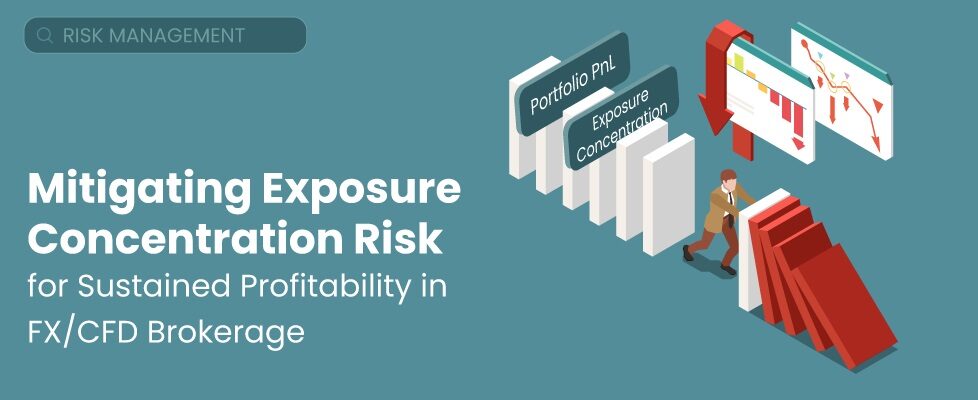Mitigating Exposure Concentration Risk for Sustained Profitability in FX/CFD Brokerage
The following guest editorial is courtesy of Cristian Vlasceanu, CEO of leading FX and CFD broker solutions provider Centroid.

In the volatile realm of FX/CFD brokerage, where financial market fluctuations are amplified by leverage, the management of P&L volatility stands as a critical operational focus. The oscillations in P&L are shaped by various factors, including market dynamics, trading volumes, and client trading patterns. A key concern within this environment is the management of exposure concentration risk, which can significantly impact the stability of the brokerage’s financial performance.
The Criticality of Risk Management
In the starting stages of brokerage firms, with minimal client activity and lower trade volumes, exposure to market risk is relatively contained. Early-stage brokers might pursue aggressive strategies to expedite returns and recover initial investments. As the brokerage matures, the landscape changes; growth aspirations and increasing operational costs necessitate a more stable P&L. A significant brokerage operation must navigate the complexities of larger trade volumes and the consequential P&L fluctuations, making exposure concentration risk a central concern.
Strategies for P&L Stability
The internalization model is a prevalent strategy among brokers, aiming to internalize client trades and capitalize on spread gains. The goal is to capture a maximum percentage of the spread, commonly up to 80%, beyond which attempts to increase profit margins become less effective due to market constraints. Recognizing this limitation is vital for brokers to manage their risk effectively.
A primary strategy to combat exposure concentration risk involves diversifying the trading portfolio across various assets and markets. This approach, however, is often limited for brokers who act as market makers since their exposure profiles mirror their clients’ trading activity.
The issue of concentration risk arises when a small number of clients control a disproportionate share of the total exposure, leading to an imbalanced book and potential P/L volatility spikes. To address this, brokers can employ the Pareto Principle or the 80/20 rule, identifying and adjusting outsized positions to normalize the book. The objective is to distribute exposure more evenly across the client base, preventing any single group from exerting undue influence on the book’s stability. This results in a client base with more uniform trading behaviors, which promotes a well-balanced book. Such a balance enhances the ratio of intra-day trading volume to end-of-day exposure, contributing to a more stable P&L while also increasing the efficiency of spread capture.
By effectively managing concentration risk, brokers can construct a trading book characterized by a diversified and stable flow of trades.

Conclusion
Exposure concentration risk poses a substantial threat to the stability of P&L in FX/CFD brokerage firms. As brokerages progress from aggressive, high-risk models to more sustainable practices, the focus must shift towards strategic risk management. While the internalization model offers a pathway to capturing spreads, its effectiveness is bounded by market efficiencies. Therefore, brokers must prioritize the management of exposure concentration risk to ensure a balanced trading book, achieve P&L stability, and foster the long-term prosperity of their business.





